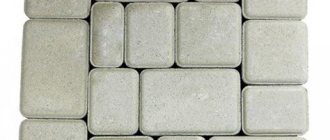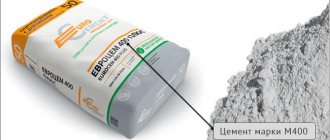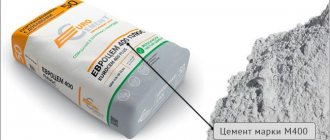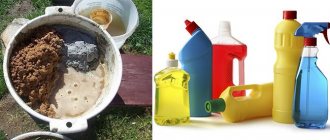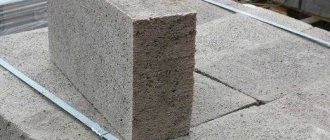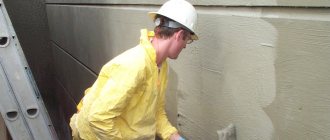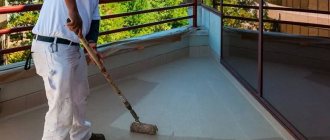What can be added to the solution instead of a plasticizer?
An excellent replacement for industrial plasticizers can be:
- liquid soap or dishwashing detergent;
- washing powder;
- shampoo;
- slaked lime.
Interesting materials:
How to measure a carry-on bag? How was the car invented? How to remove the stick from IQOS? How to pump biceps with dumbbells? How does the catalyst get into the cylinders? How to store car tires? How to store car cameras? How to store car wheels? How to store car tires? How to store car tires?
Folk substitutes for special plasticizers
Now let's look at whether it is possible to add liquid soap to cement mortar for bricklaying. In the time of our grandfathers, they also worked on solving the problem of plasticity of a composition common in construction. Laundry soap was considered among the best options.
Source adverto.sale
It was once made with minimal addition of chemicals, so it actually had no effect on the final result. Today, looking back on past experience, we can find the following recommendations:
- Liquid soap in the masonry solution. By analogy with shampoo, the proportion of products is 0.2 liters per bag of cement (50 kg).
- Washing powder. Its share is 100-150 grams for the same volume of binder.
- Construction grade PVA. Here you need to start from the volume of concrete: 0.2 liters of glue per 10 liters of the finished mixture.
Source cloudinary.com
If we take a closer look at why liquid soap is added to cement mortar, then in addition to plasticity, it provides a longer working period for the mixture. Time increases to 3 hours. The powder further slows down the hydration process, and PVA improves water resistance.
On the one hand, it is clear why Fairy is added to cement mortar: it is cheap, accessible, and the composition becomes flexible. However, few people think about the results. Modern household chemical products are full of chemically active components in relation to cement. Often the composition is not even fully indicated on the packaging. As a result, the binder does not behave as it should. The most obvious indicator is the strength of the monolith. Here the reduction reaches more than 10 times lower. In practice, even reducing water by three Fairy volumes does not change the situation - such concrete crumbles by hand.
This video demonstrates examples of monolithic mortar structures with substitutes for commercial plasticizers, and also shows testing of different mixtures in laboratory conditions:
Plasticizer for concrete: composition
Novice builders believe that there is no need to spend money on purchasing plasticizers, because they cost much more than liquid soap. According to inexperienced builders, the composition of plasticizer and liquid soap is almost the same.
Plasticizer for concrete, composition:
- Indeed, the composition contains surfactants that envelop solid particles, thereby improving the plasticity of the mass and simplifying its laying out. However, few people know that plasticizers contain phosphorus-based surfactants, and liquid soaps contain chlorine-based surfactants.
- Chemical compounds with chlorine negatively affect the quality of concrete after it hardens. This has been confirmed by a number of tests carried out in mechanical laboratories. During the research, concrete with plasticizers and liquid soap was exposed to a mechanical press.
- It was found that with the same mixture composition, but increasing the amount of water and adding liquid soap, the quality of concrete decreases significantly. Despite the fact that the plasticity of the mixture during laying is quite high and comfortable, after hardening the concrete is completely fragile. One cannot deny its excessive friability and the formation of a large number of cracks as a result of temperature changes.
When should you not add liquid soap to concrete?
Builders are sure that the larger the fraction, the more appropriate it is to introduce liquid soap. At the initial stage, when preparing these mixtures, liquid soap is mixed with water, and only then added to the solid fraction. In this way, it is possible to reduce the amount of foam to a minimum and improve the strength characteristics. Liquid soap acts as a kind of glue that binds together large particles that are difficult to mix with each other.
When you should not add liquid soap to concrete:
- It is worth noting that liquid soap is not always a good plasticizer; sometimes its use is unacceptable.
- You should not add liquid soap when preparing solutions with sand and a high clay content, or foreign impurities . In this case, all fractions are quite small and mix well with each other; additional introduction of liquid soap can worsen the hardening of the mixture, prolonging it, which negatively affects construction.
- Often pour in undiluted liquid soap when preparing the last batch. It is introduced directly into the concrete mixer in order to quickly clean it. Thus, after adding liquid soap, the concrete mixer is well washed from the finished mixture.
- The plasticizer is usually added at the end of the preparation of building mixtures, but liquid soap is best added at the initial mixing stage. Usually it is mixed with water, introduced directly into a concrete mixer, and only then fiber, Portland cement and sand are added.
- This reduces the number of bubbles and also promotes the formation of a large number of capillaries for water drainage. There is no need to wait after preparing the cement mixture with liquid soap. If you introduce it in a diluted form, without the formation of foam, the quality of the masonry does not deteriorate.
Soap
Solution and fairy
The girls learned this thing today. When the Tajiks mix the solution, they add feri and the solution does not need to be constantly stirred. I checked and it’s true that the solution doesn’t stand up. That is, it is convenient for applying bricks without having to constantly mix it. But one question, how will this be reflected later? After all, there is a lot of chemistry in fairy, it’s not for nothing that the solution does not harden. Maybe someone has come across this and knows about this trick.
On Friday I’ll ask the chemistry professor, then I’ll share with you from a scientific point of view
| All recipes | |||
| Something got me into yeast baked goods, apparently it got worse. Read more » | |||
| I think that one of the bright memories that you brought back. Read more » | |
| I couldn't find such a recipe on the website. What can I say. Read more » | |
| Three years ago we celebrated the New Year in St. Petersburg, in a cozy . Read more » | |
How will it look like?
| The girls learned this thing today. When the Tajiks mix the solution, they add feri and the solution does not need to be constantly stirred. I checked and it’s true that the solution doesn’t stand up. That is, it is convenient for applying bricks without having to constantly mix it. But one question, how will this be reflected later? After all, there is a lot of chemistry in fairy, it’s not for nothing that the solution does not harden. Maybe someone has come across this and knows about this trick. Read completely |
| +20 Register and get the opportunity to rate materials, communicate in comments and much more!')”> Register and get the opportunity to rate materials, communicate in comments and much more!')”> | pussy-pussy | 09.02.2014 | 415 | 5 | 32 comments |
They do it for him
This method is widely used by hired teams, which thus make their work easier. For example: a little soap makes the plaster more flexible and easier to work with; Concrete mixture with the addition of soap is easier to pour, especially into reinforced structures. The main thing for them is to deliver the project with less work. And they don’t care about the quality and what will happen in the future with the foundation, plaster or masonry mortar. And some manufacturers of paving slabs also do not disdain this “technological technique”. The “soapy” mixture sticks less to the molds and there is no need to waste time and money on washing them. And the molds last longer this way, unlike the products made in them.
Solution and fairy
The girls learned this thing today.
When the Tajiks mix the solution, they add feri and the solution does not need to be constantly stirred. I checked and it’s true that the solution doesn’t stand up. That is, it is convenient for applying bricks without having to constantly mix it. But one question, how will this be reflected later? After all, there is a lot of chemistry in fairy, it’s not for nothing that the solution does not harden. Maybe someone has come across this and knows about this trick. On Friday I’ll ask the chemistry professor, then I’ll share with you from a scientific point of view
| HTML code: |
| BB code for forums: |
How will it look like?
| The girls learned this thing today. When the Tajiks mix the solution, they add feri and the solution does not need to be constantly stirred. I checked and it’s true that the solution doesn’t stand up. That is, it is convenient for applying bricks without having to constantly mix it. But one question, how will this be reflected later? After all, there is a lot of chemistry in fairy, it’s not for nothing that the solution does not harden. Maybe someone has come across this and knows about this trick. Read completely |
| +20 Register and get the opportunity to rate materials, communicate in comments and much more!')”> Register and get the opportunity to rate materials, communicate in comments and much more!')”> | pussy-pussy | 09.02.2014 | 415 | 5 | 32 comments |
Why do you add liquid soap to the screed mixture?
The fact is that liquid soap contains fatty acids and alkalis. The detergent has a pH level that is close to the alkalinity of the concrete, so the acidity level of the finished mixture is not disturbed.
Why do you add liquid soap to the screed mixture?
- This is one of the advantages that allows, with minimal investment of money and time, to achieve good plasticity and viscosity of the mixture, and to reduce the amount of added water. Builders claim that adding liquid soap improves adhesion between cement particles. This way they stick together better and contact each other better.
- When using liquid soap, it is possible to obtain a viscous mixture that is well distributed and, when hardened, becomes almost iron-like, since the soap improves the adhesion between the particles of the finished mixture.
- But the benefit is observed only if the detergent is added in small quantities. Liquid soap is introduced not only into the cement mixture, but also when plastering walls and preparing masonry mortars for screed.
Soap in concrete
How to prepare black masonry mortar
The amount of pigment may depend on the color of the masonry brick. To prepare a rich black mortar for dark brick masonry, you need to take the components in the following proportions:
- Cement - 1 bucket,
- Sand - 3 buckets,
- Pigment - 1.5 liters.
When laying white bricks, the mortar can be made less bright. For this purpose, materials are taken in the following ratio:
- Cement - 1 bucket,
- Sand - 3 buckets,
- Pigment - 0.75-1 liter.
The use of high quality pigment helps strengthen the masonry mortar. Therefore, currently they are trying to replace soot with complex iron salts.
Laying facing bricks on a black joint can make the appearance of any building elite.
Proportions used
In private practice, it is customary to add 50–100 g of soap per 1 portion of concrete in a concrete mixer (or 1 teaspoon per bucket of cement). Reducing the proportions simply does not lead to the desired effect, and increasing them promotes the removal of salts from the solution and the formation of efflorescence after hardening. If there is an excess of foam, the processes of cement hydration are disrupted, which is unacceptable, especially when concreting at low temperatures.
The selected proportions do not depend on the brand of concrete and the Portland cement included in the composition; they must be within 5% of the total mass. But they affect the W/C ratio; it is better to mix the solution gradually, adding the last 10–15% of water in small portions.
The optimal amount is 5–10 ml per 10 kg of Portland cement. Soap is introduced in liquid form into a concrete mixer before adding fine and coarse filler. An important nuance: in this case, cement mortars are significantly influenced by the characteristics of sand. When purchasing it with clay impurities, you should not add detergent or soap; small suspensions only worsen the quality of the compounds. It is not recommended to use cleaning powders or grated laundry soap; in addition to poor dissolution, they contribute to the removal of salts from concrete.
Comments
Any liquid soap, not just fairies, is added to increase the plasticity of these solutions. Without them, Soviet standards simply prohibited putting. Plus, these additives allow you to save cement. More precisely, work with a solution with a lower cement content.
SN 290-74 BUILDING STANDARDS
Instructions for the preparation and use of mortars
“...2. 7. To obtain workable solutions, inorganic plasticizers (lime or clay) or organic plasticizers-microfoam formers (soap naft, soap lye, TsNIPS-1, soap stock waste, etc.) are introduced into their composition.
Fairy is for the builder a soap with fragrances and dyes.
Add a teaspoon of it to a bucket of masonry mortar. What can it spoil for you in such a concentration? Do not be afraid. Apply it. It will be more useful.
